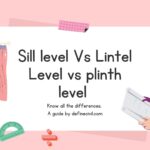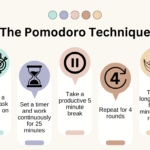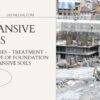We have all been there.
It’s 11:30 PM. You are lying in bed, scrolling through Instagram. You see an influencer wearing the perfect cozy loungewear set. It looks soft. It looks comforting. You click the link. You select your size. You hit “Apple Pay.”
Double-click. Done.
The dopamine hits your brain instantly. You feel a brief flash of excitement—the anticipation of the package arriving.
Three days later, the package arrives. You open it. The fabric is thinner than it looked. You put it in your closet with the three other loungewear sets you bought last month. The excitement is gone, replaced by a vague sense of guilt and a lower bank account balance.
This is the Impulse Buying Cycle.
In the modern world, marketers have spent billions of dollars removing the “friction” from spending. They have weaponized human psychology to make buying as easy as breathing. If you feel like you can’t stop spending, it’s not because you are “bad with money.” It’s because you are fighting a war against algorithms designed to empty your pockets.
In this comprehensive guide, we are going to reverse-engineer the psychology of shopping and give you the tools to stop the scroll, close the wallet, and regain control.

Part 1: The Neuroscience of “The Buy”
To stop the behavior, you have to understand the chemical reaction happening inside your skull.
The Dopamine Loop
We often think we shop because we want the thing.
Actually, we shop because we want the feeling.
When you see something you want, your brain releases dopamine. This is the neurotransmitter of anticipation. It is the same chemical released when a gambler pulls the slot machine lever.
Crucially, dopamine peaks at the moment of purchase, not when you actually use the item. The brain craves the hunt and the capture. Once you “capture” the item (buy it), the dopamine crashes. This is why “Buyer’s Remorse” sets in so quickly. You are chasing a high that physically cannot last.
The “Pain of Paying”
Behavioral economists use a term called the “Pain of Paying.”
- Cash: When you hand over a $50 bill, you physically feel the loss. It hurts. This pain stops you from overspending.
- Credit Cards: The pain is delayed. You get the item now, but you don’t pay until the end of the month.
- One-Click / Apple Pay: The pain is anesthetized. It feels like magic. You didn’t “spend” anything; you just clicked a button.
To stop impulse buying, we have to re-introduce the pain.
Part 2: The “H.A.L.T.” Method (Emotional Triggers)
Most impulse buying is emotional regulation. We don’t buy because we need stuff; we buy because we are trying to fix a feeling.
Before you buy anything, ask yourself: “Am I HALT?”
- H – Hungry: Low blood sugar leads to poor decision-making. Never shop for food (or anything else) on an empty stomach.
- A – Angry/Anxious: “Retail Therapy” is a coping mechanism for stress. You had a bad day at work, so you deserve a treat. But the treat doesn’t fix the bad boss; it just adds financial stress to work stress.
- L – Lonely: We buy things to signal status or to feel connected to a “tribe” (like buying the same Stanley cup everyone on TikTok has).
- T – Tired: Willpower is a finite resource. By 10:00 PM, your “Prefrontal Cortex” (the logical part of your brain) is asleep. This is why late-night Amazon scrolling is so dangerous.
The Rule: If you are HALT, close the browser. Go eat, scream into a pillow, call a friend, or sleep. Do not buy.
Part 3: The “Hourly Wage” Calculation
This is the single most effective math trick to cure the urge to spend.
You need to stop viewing prices in dollars and start viewing them in hours of your life.
How to calculate your “Real Hourly Wage”:
Take your annual take-home pay (after taxes) and divide it by 2,000 (roughly the hours in a work year).
- Example: You take home $50,000 a year. Your Real Hourly Wage is $25/hour.
Now, look at the item.
- New Shoes: $100.
- Calculation: $100 / $25 = 4 Hours.
Ask yourself: “Is this pair of shoes worth sitting in that boring meeting for 4 hours?”
- New iPhone: $1,000.
- Calculation: 40 Hours.Ask yourself: “Is this phone worth sitting at my desk for an entire week, Monday to Friday, dealing with my boss?”
Often, the answer is a resounding “No.” When you realize you are trading your life for plastic junk, the junk becomes less appealing.
Part 4: The 30-Day Waitlist
Impulse buys are, by definition, impulsive. They happen in the moment. If you can stretch out the moment, the urge dies.
The System:
- Create a note on your phone called “The Waitlist.”
- When you want to buy something non-essential (over $50), you are forbidden from buying it today.
- Write the Item Name, the Price, and the Date on the list.
- Set a reminder for 30 days from now.
- If, after 30 days, you still remember the item and still want it just as badly, you are allowed to buy it.
The Result:
You will find that 90% of the items on that list get deleted. You will look at the list a month later and say, “Why on earth did I want a neon sign for my kitchen?”
You just saved thousands of dollars by doing nothing.
Part 5: The “Diderot Effect” (The Chain Reaction)
The French philosopher Denis Diderot lived in poverty until he was gifted a beautiful scarlet robe.
The robe was so fancy that his old rug looked terrible next to it. So he bought a new rug.
Then his chair looked old. So he bought a new chair.
Soon, he had replaced everything in his house and was in debt.
This is the Diderot Effect. One new purchase creates a dissatisfaction with your current possessions, leading to a spiral of consumption.
- You buy a new phone $\rightarrow$ You “need” a new case, new charger, and AirPods.
- You buy a new dress $\rightarrow$ You “need” new shoes and a bag to match.
How to stop it:
Buy things that fit your current life, not things that require a new life.
Practice “One In, One Out.” If you buy a new pair of jeans, an old pair must leave the house (donate or sell). This forces you to evaluate if the new item is actually better than what you already own.
Part 6: Cleaning Your Digital Environment
You cannot resist temptation if you are being bombarded by it 24/7. You need to curate your feed.
1. The Unsubscribe Purge
Go to your email inbox. Search for “Unsubscribe.”
Every marketing email (“Flash Sale!”, “20% Off!”, “You left this in your cart!”) is a psychological hook.
Unsubscribe from all of them. If you don’t know the sale exists, you won’t spend the money.
2. The Influencer Cleanse
Go through your Instagram/TikTok following.
If an account makes you feel:
- Ugly
- Poor
- Like you need to buy something to be happyUnfollow them.Follow accounts that talk about nature, art, comedy, or minimalism instead. Curate a feed that brings you peace, not envy.
3. Delete the Payment Info
Go to Amazon and your browser autofill settings. Delete your saved credit card numbers.
Force yourself to get up, find your wallet, and type in the 16 digits manually every time you want to buy something.
That 60 seconds of friction is often enough time for your rational brain to kick in and say, “You don’t need this.”
Part 7: The “Cost Per Use” Mindset
Sometimes, buying expensive things is the right move (remember the Boots Theory). But you have to justify it with math.
Formula: Price / Number of times you will use it = Cost Per Use.
- Item A: A $200 Winter Coat.
- You will wear it every day for 4 months (120 days) for 3 years.
- Total uses: 360.
- Cost Per Use: $0.55. (Great deal).
- Item B: A $200 Prom Dress / Tuxedo.
- You will wear it once.
- Cost Per Use: $200. (Terrible deal – Rent it instead).
- Item C: A $500 Treadmill.
- Be honest. Will you use it? Or will it become a clothes rack?
- If you use it 5 times, that’s $100 per run. Go to the park.
Before impulse buying, visualize the usage, not the owning.
Part 8: What to Do Instead (Dopamine Replacement)
You are stopping impulse buying, which means you are cutting off a dopamine source. You need to replace it, or you will relapse.
Find “Free Dopamine” activities:
- Decluttering: Selling old stuff gives you a similar “transactional” high, but you make money instead of losing it.
- Library Holds: Go to your library’s website and put 5 books on hold. You get the thrill of “shopping” and the anticipation of “picking it up,” but it costs $0.
- The “Wish List” Game: Go to Amazon, fill your cart with $5,000 of stuff, and then… close the tab. Weirdly, just putting it in the cart satisfies 50% of the urge for some people.
Conclusion
Impulse buying isn’t about the stuff. It never was.
It is about trying to fill a void. It is about boredom, insecurity, or stress.
But the truth is, Amazon boxes cannot hug you. New shoes cannot fix your job.
When you stop impulse buying, you aren’t just saving money. You are reclaiming your attention. You are stepping off the hamster wheel of consumption and realizing that you already have enough.
And that feeling? That is better than anything you can buy with Prime shipping.

















